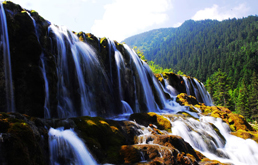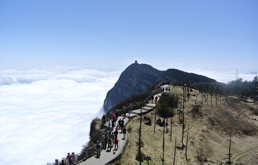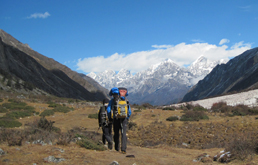Chengdu
Pandas' Hometown
Jiuzhaigou
Famous Fairyland
Emeishan
Sacred Buddhist Site
Leshan
Giant Buddha
Gonggashan
Best for Hiking
Daocheng Yading
Shangri La Views
Dujiangyan
Irrigation System
Siguniangshan
Eastern Alps
Zhaojue Monastery is an influential Buddhist temple which has alredy existed for more than 1480 years. It is located about 5 kilometers away northeast from central Chengdu city, close the Chengdu Zoo.

Its longlansting history can be dated back to Han Dynasty when a official named Dong Chang residence here, and gave the original name of Jianyuan. It became a Buddhist monastery during 627~649 of Tang Dynasty. Later, Xi Zong of Tang gave it the name “Zhaojue” which is still currently used. Zhaojue refers a deep theory in Buddhism – Revelation and Enlightenment which simply means “”instructing the people with perfect understanding of Dharma and enlightening the later starters in Dharma learning.”
The famous Buddhism master Xiu Meng was the first Zhu Chi (president of monastery) expanded Zhaojue Monastery, and taught Buddhism. The monastery survived from the constant wars after the extinction of Tang until the fifth Zhu Chi Yan Mei managed Zhaojue. During his over 30 years’ presidence, Zhaojue Monastery got expanded largely to more than 300 temples, towers, dorms, etc. There are many followers consecrating money, and helped spread the reputation.
Zhaojue Temple kept its effect well during the several hundred years from Tang Dynasty to the Ming Dynasty. Unfortunately, it was damaged again by the war in the late Ming Dynasty. The reconstruction didn’t come until in 1663 the master Zhang Xue raised founds, and rebuilt the monastery. The reconstruction lasted more than 10 years.
In Qing Dynasty, Zhaojue Monastery had played a very important role of founding the friendly connection between Chinese Chan Buddhism and Tibetan Buddhism. The monastery sent venerable monks to Tibetan region to exchange with Tibetan community. Later, a Tibetan Buddhism master was even elected as the Zhu Chi of Zhaojue Temple. Several temple and houses were specially built for Tibetan monks. Today, the practice between Zhaojue and Tibetan monasteries still continues. Many monks visit Zhaojue, study and stay at here.
Today, Zhaojue Monastery is still a very influential Buddhist sacred place. Compared to some other monasteries in Sichuan, Zhaojue Monastery is much more approachable, mundane and friendly to regular Buddhist followers as you can see many worshippers than tourists.

Zhaojue Temple is the largest Buddhist place of worship covering more than 8.53 hectares. It is a wide and large complex of temples, chapels, towers, etc, which is a typical Buddhist-temple architecture
There is a large plaque with Chinese character “Di Yi Chan Lin” which literally means the No. 1 Chan Buddhist temple. Another gage with the official name as Zhaojue is hiden on the road from Chengdu Zoo.
Entering Zhaojue Temple, you will definitely get impressed by the solemn buildings which are themed by traditional palace style. While on the roof, you can see some interesting unique decoration and icons of Buddhism. Inside the house usually place statues of Buddhas, Tianwangs, Hufas, etc. Some Important units are: Tianwang Dian, Daxiong Bao Dian, Guanyin Ge, Shifo Dian, Dashi Dian, Drum Tower, Bell Tower, Free Life Pond, Stupas of Past Zhu Chi, etc.

About 1~2 hours are needed to visit the grandiose temples and towers. While you can also find a quiet place to just sit there to experience the peaceful sacred devoted atmosphere in the monastery, or observe the living and study of monks and worshippers.

Route: Chengdu - Jiuzhaigou

Route: Chengdu - Leshan - Emeishan - Chengdu

Route: Chengdu - Kangding - Gongga - Chengdu